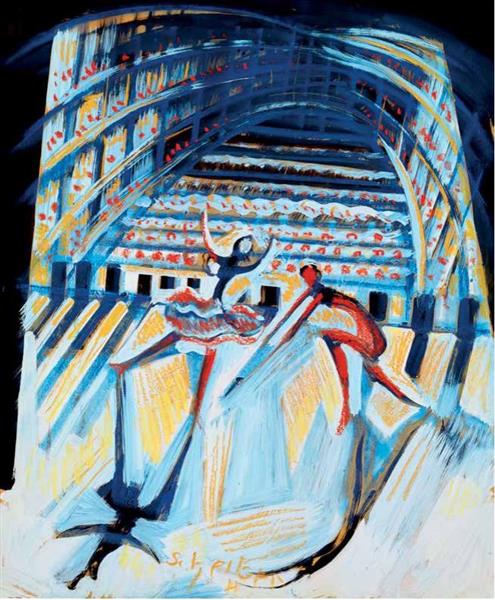Description
The work "Esti Mulata" by Hugó Scheiber, made in 1930, is a brilliant example of the style that characterizes this Hungarian painter, who stood out in the context of Latin American modernism and art. In this painting, Scheiber captures the essence of its social and cultural environment, reflecting not only technical elements, but also a rich narrative through color and composition.
At first glance, the viewer is received by a vibrant palette that stands out in the use of color, where warm tones predominate, including yellow, oranges and brown that provide a special luminosity to the work. These colors, with their almost tangible immediacy, evoke an atmosphere full of life and movement, which invites us to enter the context surrounding the central figure. The figure of the mulatto, represented with a style that fuses the figurative with the abstract, becomes the emotional core of the piece. His position, imposing and serene, suggests both a strong presence and a sense of introspection, which is characteristic of Scheiber's work.
The way in which the painting is composed, with an approach in the human figure, is an important point to consider. The figure is not only focused on the canvas, but is also surrounded by a background that feels both modern and traditional, a contrast that speaks of the dialogue between cultures that Scheiber experienced in his life. The background, which unfolds in an almost pictorial treatment of color spots, suggests an urban environment that could be associated with everyday life in Latin America, where Scheiber would pass an important part of his life.
The details of the clothing and the accessories of the main figure also deserve attention, since they are elements that point to the rich cultural heritage that manifests itself in the work. Textures and patterns in clothing are not mere ornaments, but contribute to a broader story about identity and belonging. The fusion of cultural influences found in "Esti mulata" is a testimony of an aesthetic search that seeks the essence of human experience in a world in transformation.
Hugó Scheiber, like many of his contemporaries in the field of modernism, was interested in interactions between art and identity. "Esti mulata" is presented not only as a portrait of a woman, but as a symbol of the complexities of racial and cultural identity in their time, issues that would continue to resonate in Latin American art in later decades. His work can be compared to that of other contemporary artists who dedicated themselves to exploring the human figure within the modern context, who also used a rich palette and an unmistakable style.
In summary, "Esti mulata" is not simply a painting that is seen in its form; It is a window to the conversation about the art, culture and identity that prevailed in Scheiber's work. Through his ability to intersect the abstract with the figurative, the artist offers us a deep reflection on the human being and his place in the world, an invitation to contemplate the beauty of cultural diversity that forms the essence of Latin American experience. The work, therefore, transcends its time and becomes a legacy that remains relevant today.
KUADROS ©, a famous paint on your wall.
Hand-made oil painting reproductions, with the quality of professional artists and the distinctive seal of KUADROS ©.
Art reproduction service with satisfaction guarantee. If you are not completely satisfied with the replica of your painting, we refund your money 100%.

